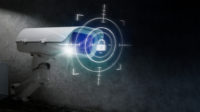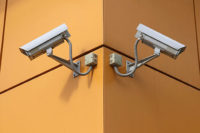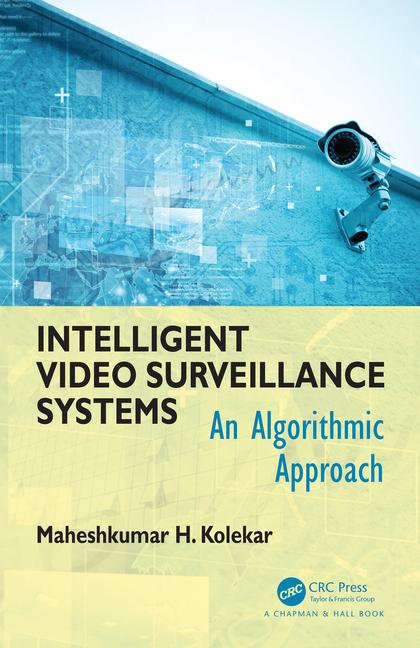Predicting the Top 5 Video Surveillance Trends for 2014

Video surveillance continues to be an evolving market, and its innovations serve as the cornerstone of many security departments. The following are five predictions for what’s over the security horizon as we leave 2013 and start 2014.
Increased Frequency of Federated Private and Public Surveillance Systems
If you’re not familiar with federated surveillance, then think New York City’s “Domain Awareness.” Dubbed the “dashboard,” the system links approximately 6,000 cameras and radiation detectors to combat terrorism and speed up response time. The NYPD’s one-of-a-kind system scans every license plate of every car crossing the bridges and tunnels into lower Manhattan and compares them to a terror watch list; police can even tell the system to scan for people based on the color of their hat or coat.
London may be the city with the most cameras in operation for surveillance. But London’s cameras aren’t federated, or networked in a cohesive way. In the wake of the Boston Marathon bombings, detectives went on foot to storefronts along the race’s finish line to obtain video footage they hoped would capture images of the bombers because a federated system wasn’t in place. Look for cities like London, Boston and others to install systems like New York City’s Domain Awareness.
Growth of Thermal Imaging in the Commercial Surveillance Sector
Thermal imaging systems are being used for transit systems. Expect that use to grow. For example, instead of a burglar alarm, a thermal system can pick up the heat signature of a passenger who has fallen on the tracks and then use the alarm output of the camera to trigger an alert for the passenger car to stop, without an operator having to visually confirm that a passenger is on the tracks. In traffic applications, police departments can tap thermal imaging to trigger a camera if a motorist runs a red light, instead of relying on ground loops. For airports, thermal imaging systems can spot avian interference at night, in shadows or through weather that obstructs visible light or IR-illuminated cameras. Thermal cameras will help prevent collisions, count passengers and can also be used to ensure appropriate staffing exists during peak times of the day.
Also expect to see thermal imaging system suppliers adapt their technology to fit into an array of complex IT platforms. Standard protocols like ONVIF will allow more manufacturers of thermal cameras to integrate with the customer’s chosen video management software.
The cost of thermal imaging cameras, which ranges from $4,500 for wide angle 320x240 resolution cameras to more than $25,000 for long-range VGA models, will drop.
An Increase in VSaaS
Video Security as a Service has not been overwhelmingly successful so far, and the reasons include bad pricing models and restricted bandwidth. But, finally, VSaaS seems to be gaining momentum in the surveillance market because it takes most of the infrastructure out of recording and viewing video. The limitation now is scalability. In fact, it’s hard to scale when every camera redirects its video data to the Web, instead of a local network recording device. By and large, the cons outweigh the benefits because the infrastructure needed to support this data rate does not exist; but, this is changing.
Increased presence of cellular ISPs in surveillance applications
Simply put, cable is costly. Cellular providers (ISPs) are improving bandwidth capacity daily. The evolution from 3G to WiMAX and then LTE (Long Term Evolution) shows how upload speeds have grown. Since ISPs monetize bandwidth, it makes bandwidth-consuming media such as security cameras expensive to maintain on cellular networks.
Look for an uptick in one or more of these three things:
First, reductions in bandwidth consumption of cameras through more efficient data compression methods like H.265. Second, the cost per megabyte of data is decreasing on cellular networks. Third, many end users consider their surveillance system a part of their overall IT budget, which – like switches, computers, and software updates – needs updating on its own. This has shifted many surveillance procurements from capital budget line items to more discretionary, operational budget line items. With this shift is a great likelihood that the end user is not averse to paying a monthly network utilization fee to a cellular ISP.
2014 could be the year in which any of these three things could happen in greater earnest, creating increased interest in surveillance over cellular connections.
Increased prevalence of edge computing
Edge computing is an IT philosophy advocating for the camera as the place where video data is stored and processed, instead of on centrally managed servers. For operators of security systems, “edge recording” allows the burden of video analytic data processing to occur at the camera, thereby decreasing the processing demand on the server, and enhancing the camera’s ability to sort data according to events. Common events would be an object left behind on a rail platform, an intruder’s presence at a perimeter fence line, or movement in the wrong direction on a road. Data sorted due to motion analytics can be stored locally and transmitted to the recording device only after an event has been confirmed. This dramatically reduces bandwidth consumption and decreases the likelihood that data will be lost due to a network connection failure. “Redundancy,” as this is known, is of paramount importance to surveillance operators everywhere, especially in critical infrastructure applications.
Look for more IT and security managers to adopt edge computing strategies for their security infrastructure in 2014.
Looking for a reprint of this article?
From high-res PDFs to custom plaques, order your copy today!








